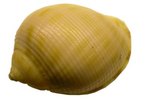
Snails act as both pets and pests in both saltwater and freshwater aquariums. In saltwater aquariums, more consideration has to go into picking a snail. A particular snail's ability to clean algae, tolerance for other invertebrates and rate of reproduction all have to be taken into account.
Turbo Snails
Saltwater hobbyists keep turbo snail (Turbo spp. and Astraea spp.) for several reasons. First, these snails can help control algae through their constant grazing. Additionally, despite their voracious appetite for algae, they will not harm expensive invertebrates like corals. This makes them ideal for reef tanks. Lastly, some species have colorful shells, with splashes of purple and interesting shapes.
Nerite Snail
Nerite snails belong to the family Neritidae, and include many fresh and saltwater species. Like turbo snails, they eat algae and thrive in aquarium conditions. They also work well in reef tanks since they do not harm invertebrates. One perk is that most species can only breed in brackish water, not full-strength seawater. This means that they cannot overrun the aquariums.
Cerith Snails
Cerith snails (Cerithium sp.) look a bit different than turbo and nerite snails. It is smaller and has a more elongated cone shape. Some species have intricate patterns on their shells. While they share the algae-eating and tolerance of other invertebrates, they also scavenge uneaten food the fish miss. This helps keep the water from fouling and promotes a healthier aquarium.
Clam Snails
Not all saltwater snails are good for aquariums. Pyramidellidae sp. is a tiny parasitic snail. They attack large aquarium clams like Maxima clams. The snail is barely visible at a few millimeters long. They have white, cone-shaped shells, and live on the clams, eating away at them. Certain species of wrass will readily eat them, though these fish will then move on to eating every other snail in the tank. These snails usually get into aquariums by accident on infected clams.
References
Photo Credits
-
John Foxx/Stockbyte/Getty Images



